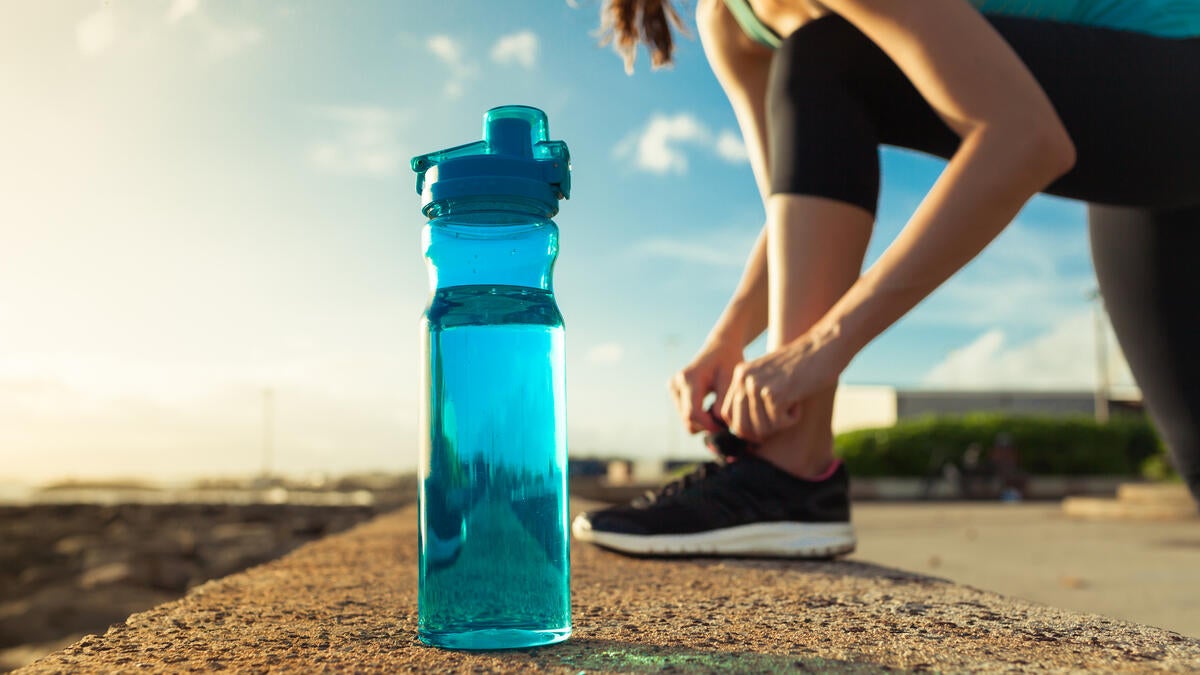Tips for staying hydrated during Pat's Run and other outdoor activities

Photo courtesy iStock/Getty Images
By Aidan Hansen
Staying hydrated and listening to your body during outdoor exercise activities is crucial to one's health and safety, especially in warm climates.
And with the average daytime high temperatures climbing past 80 degrees this month, it's something participants of the upcoming 20th annual Pat’s Run on Saturday, April 13, will want to keep in mind.
“One of the things that has more impact on the body is making sure that participants are aware of the distance,” said Floris Wardenaar, an assistant professor of nutrition at Arizona State University's College of Health Solutions. “If they have never run this type of distance, they don't have to run 4.2 miles (6.76 km) during a training. A simple trick is to run one or two times for the expected duration of the run.”
Wardenaar and other experts from the College of Health Solutions shared some tips with ASU News for staying hydrated during the upcoming run and other outdoor activities.
Listen to your body and be prepared
While the race may not be long for seasoned runners, first-time participants and those walking should be aware of how their body adapts to mental and physical fatigue as well as environmental conditions during training and the race.
“The number one thing would be to listen to your body during the run as an individual competing, or whether you're going out there to just do it for fun,” said Jason Siegler, director and associate professor at the College of Health Solutions.
Water will be provided at aid stations throughout the run.
“If you're hydrated before, and you feel like you get a little thirsty along the road, grab some fluid at one of the aid stations,” Siegler said.
For those training for the run, it is better to run in climates similar to that of the race location, as it will help the body acclimate to the conditions. Staying hydrated throughout training and participating can improve athletic performance and adaptation to the surrounding environment.
“Those are some more recent data that says staying well hydrated while you're training not only will make you feel better, but your body will adapt better,” said Stavros Kavouras, assistant dean and professor at the College of Health Solutions.
Know your climate
Humidity is an important factor to consider for those participating in Tillman Honor Runs, which are hosted in 37 different cities across the country, as well as the virtual runs. Those running in environments with high humidity and high temperatures should proceed cautiously when running.
The human body uses sweat as a way of cooling its temperature. The sweat evaporates off of the body to effectively cool down. In humid environments, if humidity levels are too high, it can be harder for the body to evaporate sweat because of the water in the air. That can lead to overheating much faster than running in dry heat.
“It's much more dangerous to exercise in the heat,” Kavouras said. “The combination of moderate to high environmental temperatures with a very high humidity is the worst combination.”
Check your urine color
Another tip for training and prep before the race is to analyze urine color. Urine color is a great way to measure how hydrated your body is.
“Looking at your urine color to make sure it's clear to a somewhat light, lemonade-y color, that should be a pretty good indication of your pre-run hydration status,” Siegler said.
Urine concentration is the mixture of solutes and water in urine. The kidneys retain or excrete water based on how hydrated someone is. If someone is hydrated, their kidneys will excrete more water. If someone is dehydrated, then their kidneys will conserve water. The more hydrated someone is, the lighter the color; the less hydrated, the darker the color.
In an unpublished study by Wardenaar and Kavouras, they found that those who had a lower urine concentration performed better on a two-mile run than those who had a higher urine concentration.
“We were able to show that in those under-hydrated people that were able to bring their urine concentration down, that their running times improved,” Wardenaar said.
Kavouras also said that a drink containing electrolytes is a great way for your body to maintain water. One of the most common electrolytes is sodium, and hydration drinks contain sodium, which bonds to the water molecules in your body, which helps to contain water in your system.
Overall, the experts at the College of Health Solutions share that running can be a great way to improve health in all kinds of ways, as long as you remember to listen to your body and stay hydrated.
More Health and medicine
College of Health Solutions medical nutrition student aims to give back to her Navajo community
As Miss Navajo Nation, Amy N. Begaye worked to improve lives in her community by raising awareness about STEM education and health and wellness.After her one-year term ended last month, Begaye’s…

Linguistics work could improve doctor-patient communications in Philippines, beyond
When Peter Torres traveled to Mapúa University in the Philippines over the summer, he was shocked to see a billboard promoting Arizona State University.“It wasn’t even near the university,” said…

Turning data into knowledge: How Health Observatory at ASU aims to educate public
This is how David Engelthaler described his first couple of months on the job as executive director of the Health Observatory at Arizona State University:“It’s been a little bit of drinking from the…